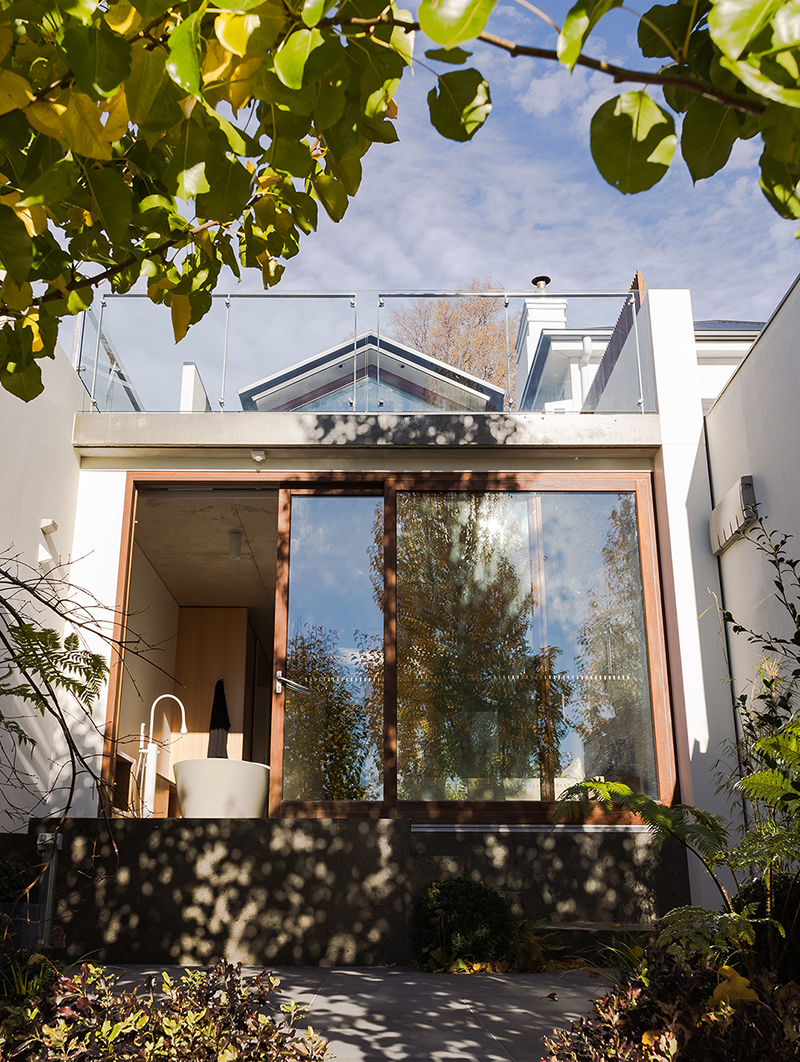Birrelli art+design+architecture

As Birrelli celebrates its 25th year in business, Launceston-based architect and former ACA State President Jack Birrell reflects on the challenges and joys of practice on a remote island.
Background
Birrelli art+design+architecture offers professional design services across a breadth of residential, educational, public, commercial and heritage projects. We are a broad-based design studio delivering bespoke buildings, often technically inventive, in a market of extremely tight budgets for both institutional and private clients.
In 2019 we celebrate our 25th year in business, and are humbled to have been recipients of more than 60 design awards, across most categories of architecture recognised in state, national and international arenas.
At Birrelli we have a love for the arts and promulgate an architecture encompassing the landscape and seek to positively change social awareness of the environment from the built to the wild.

As in life, architecture is not a solo act. Birrelli is operated by Jack and Rebecca Birrell (left and centre) with Lynden Jones (right); together we round out an energetic creative team of three. Becci and I met at art school, and Lynden and I both studied and taught architecture at UTAS over a ten-year period. In our working practice we don’t see a separation between art and architecture. We navigate between poetry, painting, music, sculpture and architecture.
On our island home, our working context is not just regional, we are also remote. We average 15 reasonable sized projects a year, and while workflow is a key focus for cashflow and business-happiness, the biggest challenge is the working context.
Tasmania has 40% of its land area protected as National Park and Wilderness World Heritage Area and the entire population is less than that located within one Melbourne suburb. The ratio of architects to locals is around 1:500 so it can be very slim pickings at times, particularly as we are located outside the capital. Here you need to be robust and flexible in the business of architecture and work to your strengths.
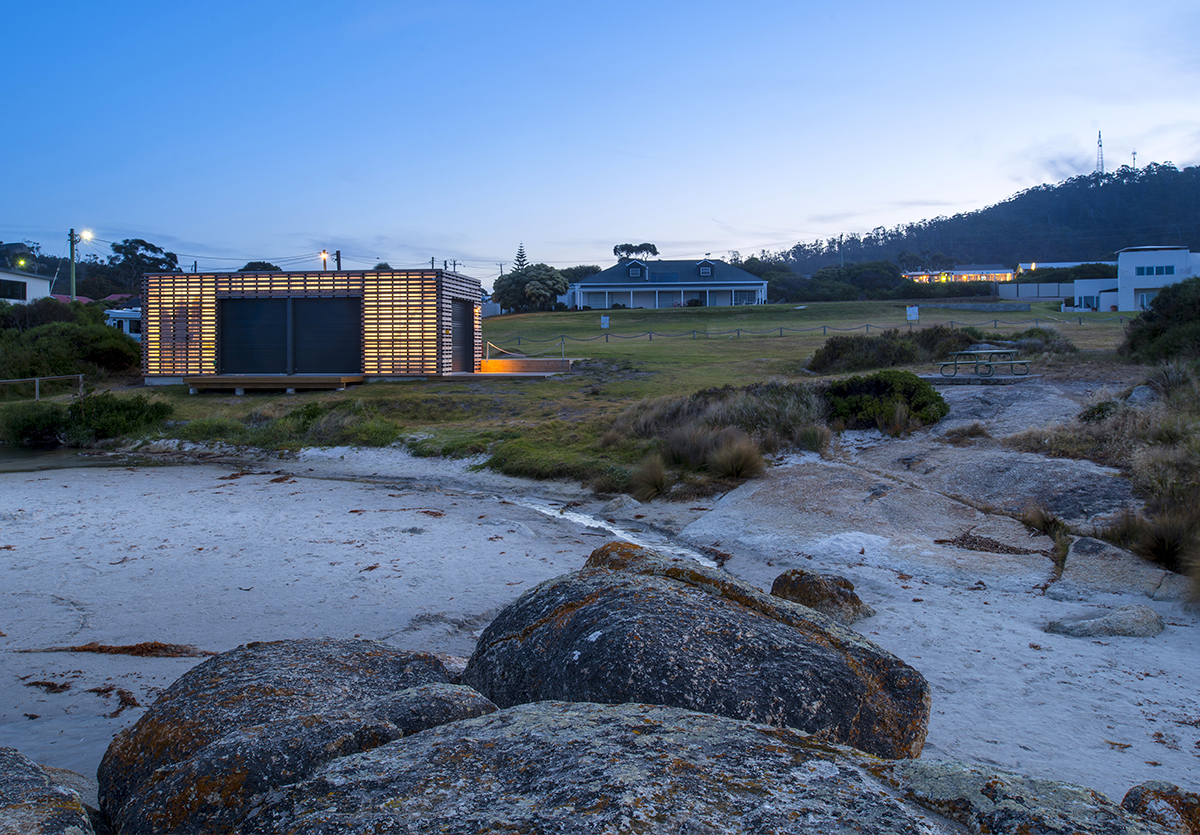
One of Birrelli’s public projects, the Bicheno Surf Life Saving Club + Boathouse. Photo: Rob Burnett.
Lessons Learned
Birrelli diversified into property development and tourism around 2008 to broaden and stabilise our base business in architecture. Architecture remains the core business as tourism is seasonal and property development is a slow burn here.
Tourism since 2012 has become the main industry and economic driver for the state (Hello MONA-effect – thank you David Walsh for putting Tassie on the map) and as an architect you encounter all types of proponents in this sector.
The push of tourism has rapidly escalated and with it two distinct types of developers knock on your door – the ones who seek to overreach their projects into the public protected wild places, and those sensitive to sustainable design.
Inescapably, a Tassie architect must choose a path for their business – you either choose to sell your soul for a quick dollar on a low-grade development, or you make a stand against these developments, which inappropriately push into our heritage, diminishing the natural and wild public areas.
Birrelli actively takes a stand to protect the unique built heritage and special natural environments of Tasmania. We offer architectural services only to those proponents that value sound environmental and social accountability.
There are now clearly dual modes of development and the debate in the public realm is HOT. The public are fighting hard for quality over greed and architects are in the frontline of the debate, and on both sides. It’s no longer just pulp mills or dam projects; it’s faux Chinese junk-like tower buildings, cable-cars and pylons crossing cities, valleys, gorges and mountains, and private accommodation with chopper access inside WHA wilderness.
Florian Beigel described his architecture as “the construction of artificial landscapes”. Embracing a similar proposition, we avoid the conventional to search for new ways of thinking, new ways of seeing, moments of context to experience the time and the power of the void – a void we identify within Tasmania’s amazing settings. We see our buildings as abstract landscape infrastructures, whether it’s a new house on historic Salamanca Place or an underground Gallery at Woolmers World Heritage Site. The art of architecture within a setting, like the abstraction of a zen garden, composes elements forming voids and spaces in a way that is not additive to a place of “natural” beauty but rather abstracts compositions of “natural” objects. Our compositions of “artificial landscapes” function to incite appreciation and repose, and as Beigel suggests, “we design the rug, but not the picnic”.
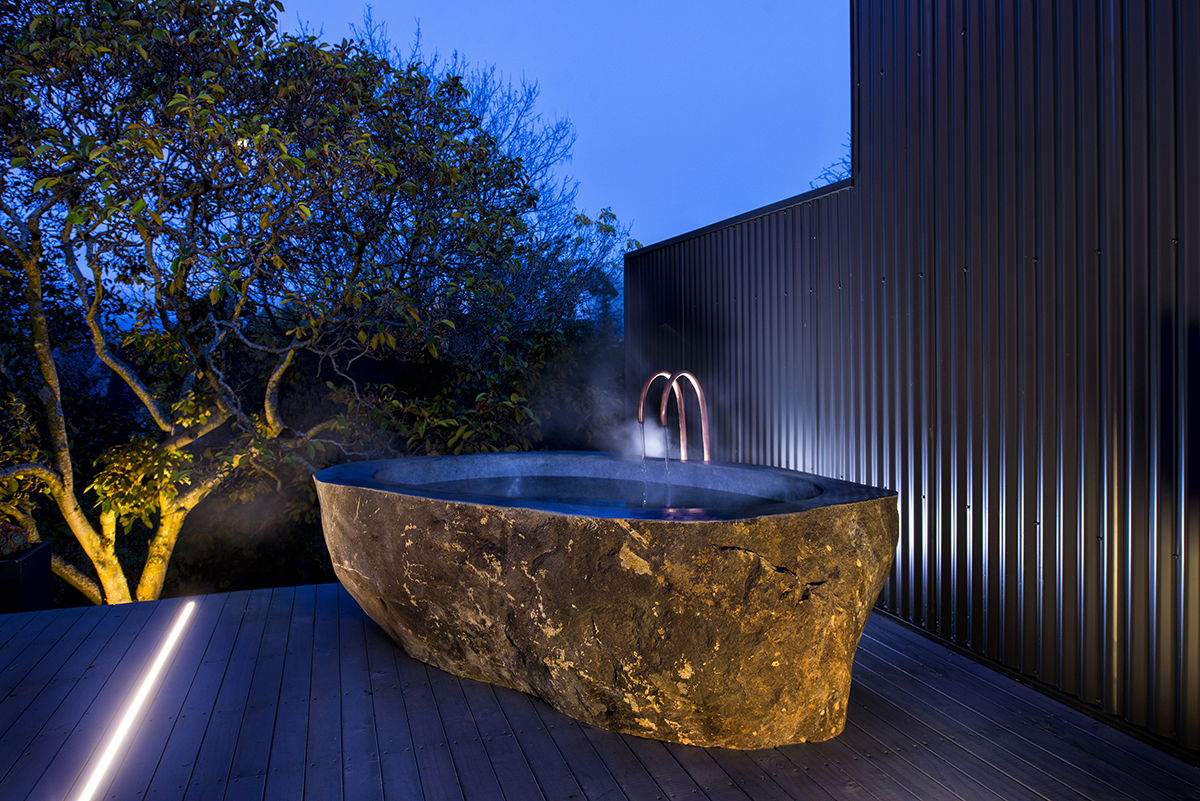
The Hatherley Birrell Collection features boutique accommodation options developed by Birrelli in Launceston. Above the Magnolia Garden Pavilion (photo: Rob Burnett), below the Muse Garden Pavilion (photo: Phil Kuruvita).
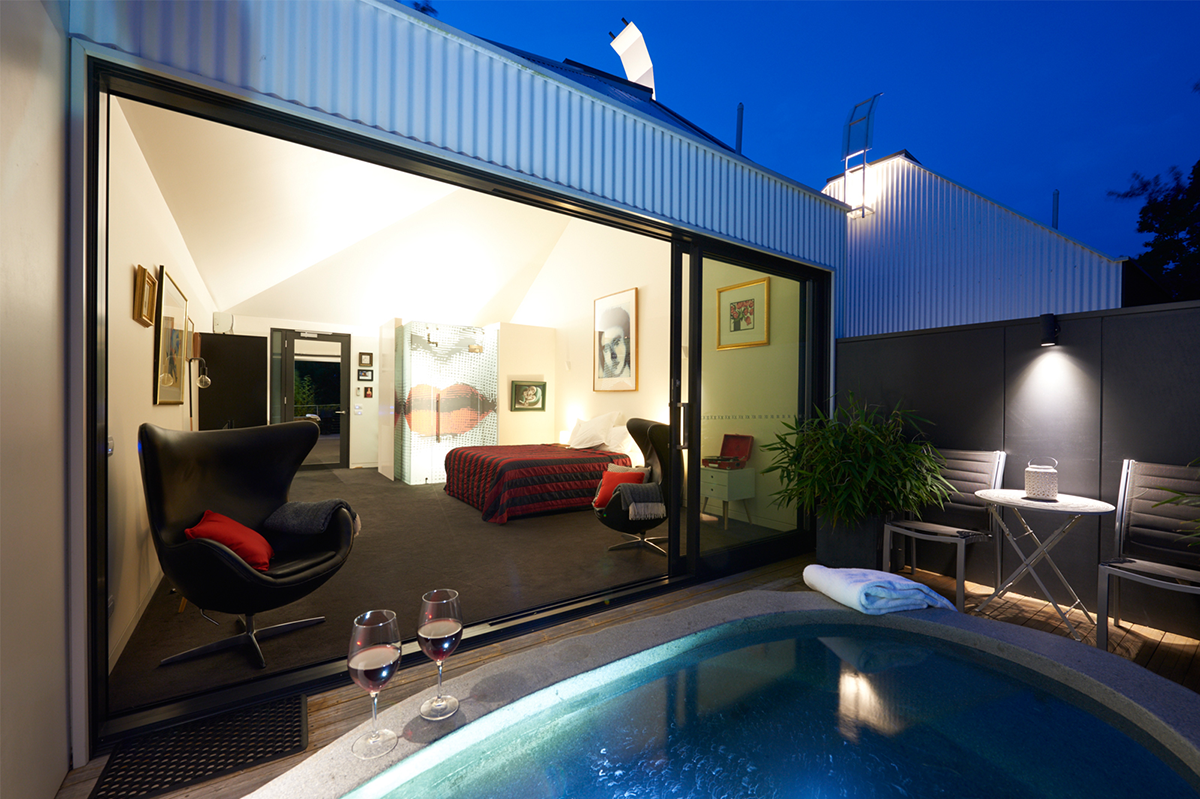
Collaboration
We are extremely thankful as a small firm for the generosity of other architects we have collaborated with over 20 years, namely: McBride Charles Ryan, Lyons and Maddison Architects. These firms bring their scale and breadth of experience, resources and technical systems to our shores in spades. They have allowed us to not only keep pace but grow skillsets and experiences. In turn we share our gains with young graduates that come through our practice. Supporting architectural education programs, we see these learnings ripple and expand across the whole of the profession on our remote island.
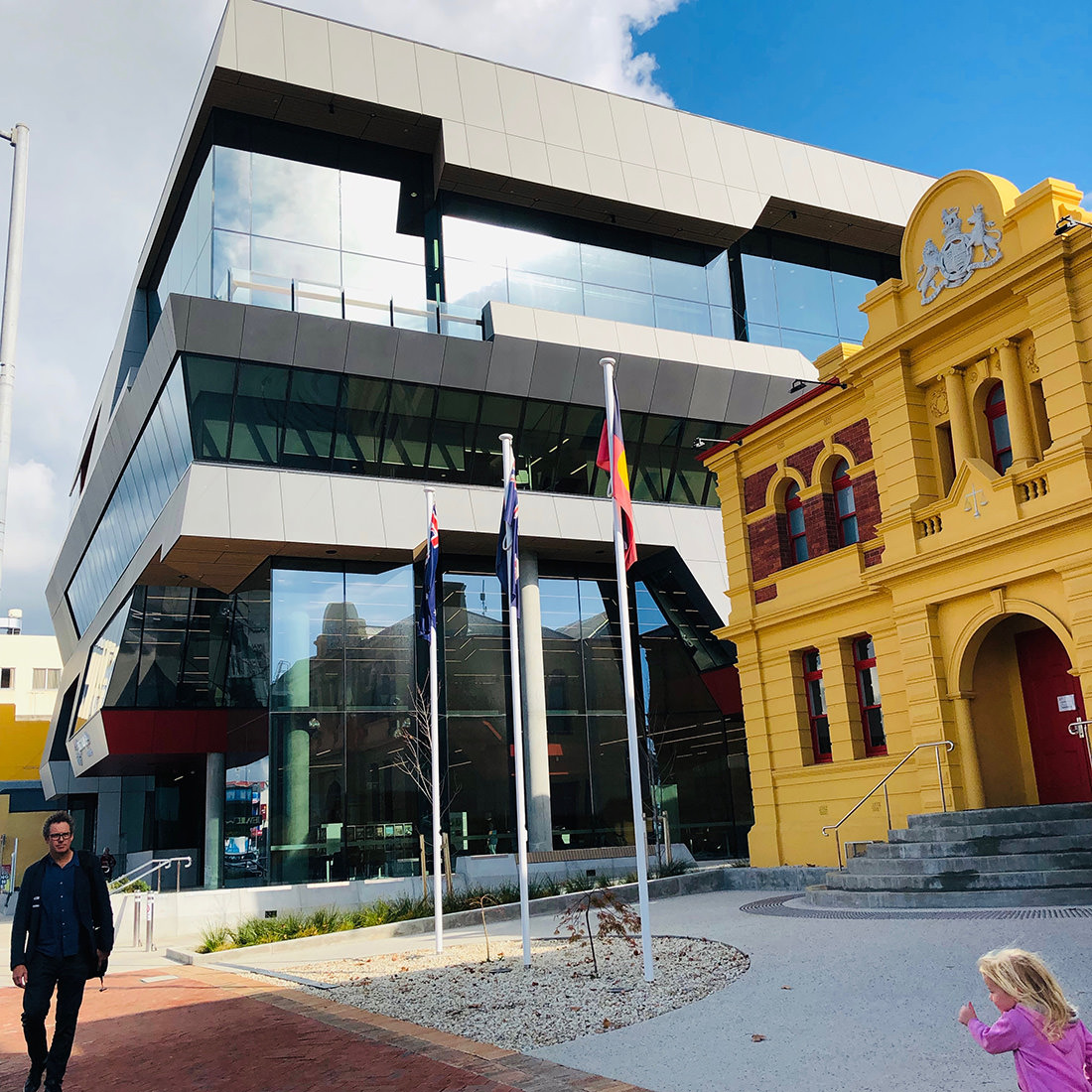
Birrelli collaborated with Lyons and Maddison Architects on the Devonport Living City transformation project.
ACA
The ACA collegiate is a great starting place for making meaningful connections in architecture. If you’re a small firm, we highly recommend building relationships with larger firms. If you’re a large practice, money can’t buy the insight and local knowledge of a smaller firm based in a regional (remote) place.
At Birrelli, ACA membership provides a solid base for business, which makes the space for critical and pragmatic invention. It allows us to be optimistic and confident, and to take the risks necessary to dream and make good buildings – where the art in our architecture cannot be removed without affecting everything.
Aedh Wishes for the Cloths of Heaven
… Of night and light and the half light,
I would spread the cloths under your feet:
But I, being poor, have only my dreams;
I have spread my dream under your feet;
Tread softly because you tread on my dreams.W.B. Yeats
As a small practice, we have found the ACA a great support. I joined the ACA in December 2009 and the membership of progressive like-minded businesses impressed me. In March 2010, I became the ACA State President for Tasmania and maintained a five-year role on the National Executive Council (NEC) pursuing strategic planning. This included the representation of small, medium and large practices; analysis and growth of the membership base; representation and promotion of women in architecture; development of the ACA website with provision of online services; review and changes to the ACA Constitution for ongoing compliance allowing the merger of the Tasmania and Victorian branches (and in turn the NT and QLD branch merger). The ACA maximises benefits returned to members through advocacy, representation in key forums nationally and with ongoing services, support and careful financial management.
An idea for the ACA as a national thought leader in architecture would be to create opportunities for large, medium and smaller scale firms to collaborate on key major projects. There is a need to lobby for these partnership arrangements, particularly on the large regional public educational and health projects, which are jointly funded by federal, state and local governments.
